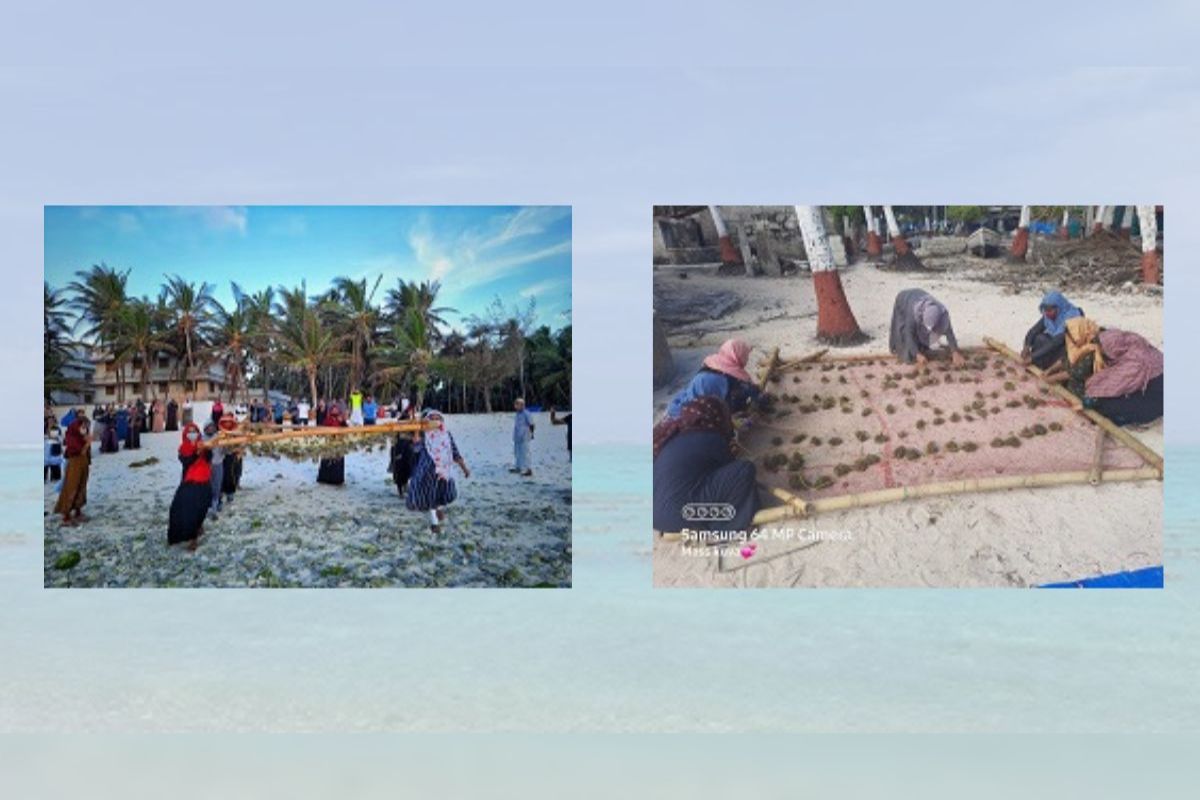Seaweed Farming: Know how it can become a source of tremendous income
New source of income for women.
Seaweed Farming | Algae, called Seaweed in English, is an aquatic plant. It does not have a root, stem, leaves, or flowers. They play an essential role in the marine ecosystem. They form an underwater forest called Kelp Forest. These forests act as nurseries for aquatic organisms like fish and snails.
These algae can be used for making medicine, fertilizer, and food. For this, it is necessary to identify the correct algae. Algae is very useful. This is why the administration in Lakshadweep has tried to provide a new means of livelihood to the people by developing algae cultivation as a business.
Plan to make a center for Algae Cultivation
Lakshadweep, known for its beautiful beaches, may soon become famous for seaweed farming. A program is being run to cultivate seaweed on nine islands here. Its purpose is to progress the area. Actually, the administration has technical support from ICAR-Central Marine Fisheries Research Institute (CMFRI) for this program. The calm and pollution-free climate of Lakshadweep offers immense potential for quality seaweed production. These algae can be used in pharmaceuticals, food, and nutraceuticals.

Species of Algae
There are several species of algae such as Gracilaria edulis, Gracilaria crassa, Gracilaria verrucosa, Sargassum spp., and Turbinaria spp. In Lakshadweep, indigenous red algae Gracilaria edulis and Acanthophora spicifera varieties are being cultivated on 2500 bamboo rafts.
100 families of 10 women self-help groups are benefiting from this. The demonstration, organized by the Indian Council of Agricultural Research’s Central Marine Fisheries Research Institute, aims to popularize algae cultivation in the islands to improve livelihoods. Women are largely involved in algae cultivation, which has given them a new source of income.
60 times increase of Algae
A recent study by ICAR-Central Marine Fisheries Research Institute (CMFRI) has confirmed the immense potential of algae growth in the islands. The growth of indigenous seaweed species has been observed in different lagoons of Lakshadweep with Gracilaria edulis species showing the fastest growth. It has increased almost 60 times in 45 days.
Lakshadweep Administration has joined hands with the institute for multi-location trial farming and capacity building of stakeholders. Thus during 2020-21 experimental trial farming was conducted in Kiltan, Chetlah, Kadmath, Agatti and Kavaratti islands, which was successful.

75 thousand crore farming every year
Studies conducted by the institute have also revealed that the islands have the potential to produce about 30,000 tones of dried seaweed every year, which is worth 75 thousand crores. This much production can be achieved by cultivating only 1 percent of the island’s area of 21,290 hectares.
Good for the Environment
The ocean absorbs carbon dioxide on a large scale and seaweed has the ability to sequester carbon. In this way, about 6,500 tons of carbon dioxide can be separated per day from the cultivation of seaweed on a large scale. This is called hitting two birds with one stone. Seaweed will not only provide livelihood to the people of the island, but will also protect the environment by keeping the sea clean.
Also Read: Why is Pune Anjali’s model of Poshan Vatika a hit?
Contact us – If farmers want to share any valuable information or experiences related to farming, they can connect with us via phone or WhatsApp at 9599273766 or you can write to us at “[email protected]”. Through Kisan of India, we will convey your message to the people, because we believe that if the farmers are advanced then the country is happy.
You can connect with Kisan of India on Facebook, Twitter, and WhatsApp and Subscribe to our YouTube channel.



